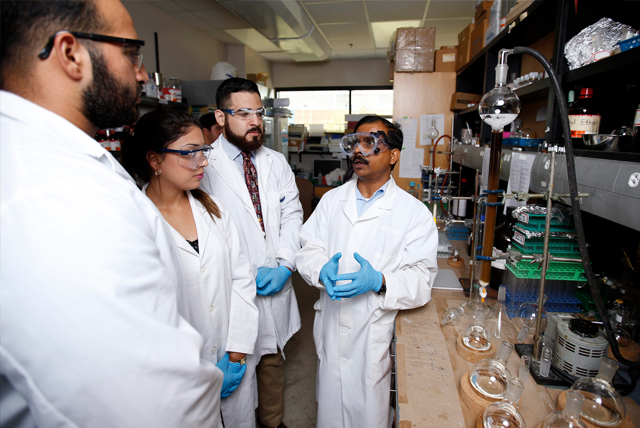Document Type
Article
Publication Date
9-2018
Abstract
Highlights
- Two lowest energy conformers differ in allyl conformation, conformer with exo allyl having lower energy.
- Lowest energy conformer has “chair” conformation of 7-membered ring and “edge-on/face-on/face-on/edge-on” array of pH groups.
- Next lowest energy conformer with exo allyl has alternating “edge-on/face-on” arrangement and “twist” 7-membered ring.
- Changes in “chair/twist” conformations with different substrates is possible due to 2.4 kcal/mol energy difference.
- These results explain stereochemical outcome of the reaction, and will guide design of new catalysts.
Abstract
The most stable conformations of a TADDOL-based phosphoramidite P,N ligand coordinated to a palladium(II) η3-π-allyl fragment have been investigated using molecular mechanical and quantum mechanical calculations. The conformational analysis initially generated 53 unique structures within 5 kcal/mol and subsequent geometry optimization narrowed the number of low-energy conformers down to 13. The two lowest energy conformers differ mainly in the conformation of the allyl group. The conformer with an endo allyl group has a slightly higher relative energy than the conformer with an exo allyl group. Comparison of the main geometric parameters around the Pd(II) metal center in the two lowest energy conformers with the available X-ray single crystal structures of Pd(II) η3-π-allyl complexes of P,N ligands shows a good agreement in both the bond lengths and angles. The lowest energy structure has a “chair” conformation of the seven-membered phospha-dioxa-cycloheptane ring and “edge-on/face-on/face-on/edge-on” arrangement of the phenyl rings. The next lowest energy conformer with an exo allyl group has a “twist” conformation of the seven-membered ring and alternating “edge-on” and “face-on” arrangement of the phenyl rings as anticipated from the Knowles “edge-on/face-on” concept. The results of this study support published hypotheses regarding the origin of the chiral induction in the enantioselective Pd(0) catalyzed intramolecular allylic alkylation reaction by the repulsive interactions between one of the phenyl groups in the seven-membered ring in the lowest energy conformer of the ligand with the substrate. As such, the results of this research can be used to guide the synthesis of new and improved variants of this important catalyst family.
Recommended Citation
Ateşin, Tülay A., Abdurrahman C. Atesin, Oscar Rodriguez, Diego Rivera, and Lohany Y. Garcia. "Conformational analysis of a TADDOL-based phosphoramidite P, N ligand in a palladium (II) η3-π-allyl complex." Computational and Theoretical Chemistry 1139 (2018): 70-76. https://doi.org/10.1016/j.comptc.2018.07.007
Creative Commons License

This work is licensed under a Creative Commons Attribution-NonCommercial-No Derivative Works 4.0 International License.
Publication Title
Computational and Theoretical Chemistry
DOI
https://doi.org/10.1016/j.comptc.2018.07.007



Comments
Original published version available at https://doi.org/10.1016/j.comptc.2018.07.007